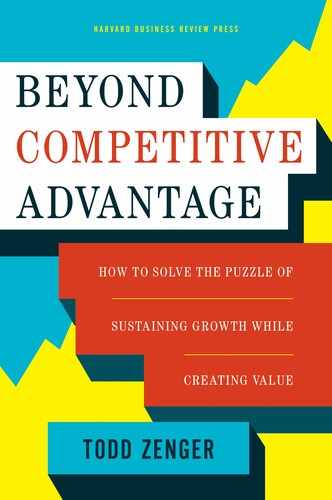As a business school discipline, strategy is remarkably new. By many accounts, its status as a discipline within business schools didn’t take hold until after the publication of Michael Porter’s books, Competitive Strategy in 1980 and Competitive Advantage in 1985. These books powerfully translated industrial organization economics into useful tools and logic for managers, and firmly entrenched competitive advantage as the strategist’s central object. Corporations were to discover and occupy a unique and valuable position that delivered sustained profits beyond that enjoyed by competitors. From these ideas evolved concepts that have shaped pedagogy in strategy courses for decades.
In 1996, I began teaching a course labeled corporate strategy—a course aimed at developing strategic thinking beyond competitive advantage. Rather than the pursuit of position, the course focused on the pursuit of growth and sustained value creation. However, the state of pedagogy on the topic of corporate strategy was poor, largely a string of loosely related topics with scattered guidance and no coherent central message. Unfortunately, it largely remains so. Instructors on the topic have something to say about leveraging capabilities and seeking relatedness. They have some logic to provide regarding vertical integration decisions, and some rather unrelated guidance to offer for managing investments, pursuing acquisitions, and composing organization design. However, unlike the well-packaged and tightly integrated logic of a business strategy course, guidance on corporate strategy remains scattered and fragmented.
Moreover, I quickly recognized that our challenges in teaching corporate strategy were not lost on executives who tried to absorb it. While the topic of corporate strategy resonated, as executives viewed sustaining value-creating growth as their primary challenge, they too were frustrated with the rather à la carte approach that guidance on corporate strategy offered.
This book emerged out of this intense dissatisfaction with the guidance that business professors and thought leaders have to offer about how to sustain value creation. Relative to most popular business books on the topic, this book takes a distinctly different tack. The book does not distill lessons from a set of successful firms (though the book provides abundant illustrations). Instead, the book targets the thoughtful and aspiring strategist with an approach reminiscent of Porter’s translation of industrial organization economics. While Porter distilled and synthesized logically sound and well-tested research into a compelling framework and approach, he offered no simple answers. Instead, he highlighted critical questions and trade-offs, and introduced a structured approach to strategic thinking. As I noted, the result has powerfully shaped the rhetoric and reasoning that managers deploy in the pursuit of competitive advantage.
My aim in this book is to translate, illuminate, and synthesize a very different body of academic work, often labeled organizational economics, to answer a different set of questions, surrounding the path to sustained value creation through ongoing efforts to organize and arrange assets and activities. Fortunately, there is an abundance of relevant literature, some of it my own, but much the work of others, including Nobel Prize–winning economists. But surprisingly, almost all of it remains outside the lexicon and logic that managers routinely deploy in evaluating and developing patterns of growth. My contribution is to provide a synthesis and translation, illuminating the power of a more common logic and language, with the aim of providing the thoughtful or aspiring strategist with an enhanced capacity to generate and sustain effective growth strategies.
A central message of the book is that a strategist seeking to sustain value creation needs more than a map to a position. The strategist needs a corporate theory of value creation, something that provides ongoing guidance to the selection of positions and a vast array of strategic actions. In much the same way that a scientist’s insightful theory reveals promising experiments to conduct, a well-crafted corporate theory reveals a succession of promising strategic experiments—a succession of strategies and strategic choices. Better corporate theories reveal better strategies—strategies with a higher probability of success. Moreover, a well-crafted corporate theory elevates the strategist’s task of sustained value creation from a series of à la carte decisions about acquisitions, investments, design, financing, integration decisions, and leadership, each guided by rather fragmented logic, to a more coherent set of choices guided by a synthetic logic. The book illuminates the attributes of an effective corporate theory, connects corporate theory to valuable logic in organization economics, and highlights a corporate theory’s role in sustaining value creation. My hope is that upon completion of the book, you will have a clear understanding of strategic thinking that can move your organization beyond competitive advantage and toward sustained value creation.
..................Content has been hidden....................
You can't read the all page of ebook, please click here login for view all page.
